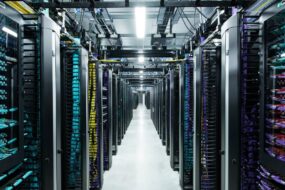
Source: Rowland Anafu
In the ever-evolving landscape of product development, a significant transformation is taking place. UI/UX design fields are no longer separate entities but are becoming more interconnected with advanced technologies such as AI, AR/VR, and IoT. This fusion is revolutionising the product design landscape and transforming our relationship with technology. It is bringing futuristic visions to life in the present.
The Changing Landscape of Product Development
The rapid advancement of technology has greatly impacted product development, particularly in the realm of UI/UX design. We are currently experiencing a notable transition from conventional design methods to a more holistic approach, where AI, AR/VR, and IoT are key players in crafting user experiences that are both intuitive and immersive.
Artificial Intelligence (AI) has emerged as a crucial element in this ongoing transformation. Nowadays, the focus has shifted from simply automating tasks to actually improving the creative process. AI revolutionises the design process by leveraging extensive user data to offer valuable insights, empowering designers to make informed decisions based on data. Streaming services such as Netflix utilise AI algorithms to curate personalised content, resulting in a substantial enhancement of user engagement.
The emergence of conversational interfaces, like advanced chatbots driven by natural language processing, is further evidence of this ongoing evolution. These tools have evolved beyond simple question-answer functions, offering smooth, biological interactions that improve customer support and engagement.
Augmented Reality (AR) and Virtual Reality (VR) have emerged as significant contenders in this modern era. They have expanded the possibilities for creating more engaging experiences, as demonstrated by applications such as the IKEA Place app. This app utilises augmented reality to completely transform the way people shop.
As technology continues to evolve, there is a growing need for a new generation of UI/UX designers. These professionals must possess a deep understanding of human-centred design principles and a keen awareness of the possibilities and constraints presented by emerging technologies. This combination of skills shapes a future in which product development goes beyond simply meeting user needs. Instead, it focuses on creating experiences that are not only innovative but also deeply meaningful to users. Overall, the progress of product development is a thrilling adventure that leads to more interactive, adaptable, and customised user experiences. This is achieved by seamlessly combining UI/UX design with state-of-the-art technologies.
Source: Rowland Anafu






